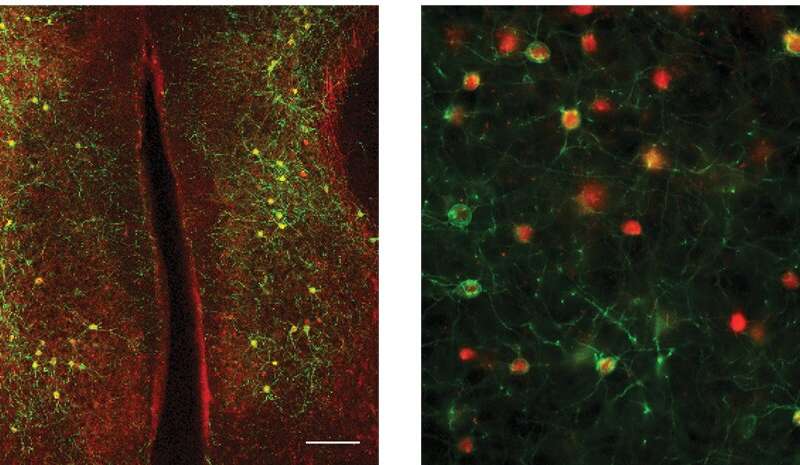HOME
The synchrony between neurons in different brain hemispheres could aid behavioral adaptation

In order to survive and thrive, humans and other living organisms must continuously acquire new strategies to adapt their behavior to changing environments. Past studies suggest that the synchronization between different brain cells could create flexible brain states that facilitate behavioral adaptation to different situations.
Organisms have often been found to exhibit rhythmic neural activity that simultaneously occurs in different parts of the brain in a synchronized fashion. However, neuroscientists have not yet been able to determine whether this synchronized activity is important for specific brain functions or is merely a by-product of the way in which brain circuits are organized.
Interestingly, people with mental health disorders such as schizophrenia and autism have been found to exhibit deficits in synchrony between neurons. Understanding the meaning and significance of synchronized neural activity could thus have important implications for several fields of study, including neuroscience, psychology and psychiatry. Researchers at the University of California, San Francisco, in collaboration with scientists at Harvard and Stanford University, have recently carried out a study exploring the role of gamma-frequency (~40 Hz) synchrony between prefrontal parvalbumin (PV) interneurons in mice that are acquiring new stimulus-reward associations. Their paper, published in Nature Neuroscience, offers new insight that could ultimately enhance our understanding of abnormalities in neural synchronization patterns observed in people affected by a number of mental health disorders.
"We currently do not understand whether deficits in synchrony associated with specific mental disorders need to be corrected in order to treat them," Vikaas Sohal, one of the researchers who carried out the study, told Medical Xpress. "In our recent study, we set out to evaluate whether this synchrony actually contributes to learning in mice." In their study, Sohal and his colleagues used an approach known as optogenetics, which uses light-sensitive proteins that can activate neurons to control the synchrony between neurons in the left and right hemispheres of the brains of mice. This allowed them to test whether altering the synchrony of these neurons affected the mice's associative learning during conditioning experiments. "We then used genetically encoded voltage indicators—proteins which change their fluorescence based on neuronal activity—to detect when specific neurons in the left and right hemisphere became synchronized," Sohal explained.
News Source